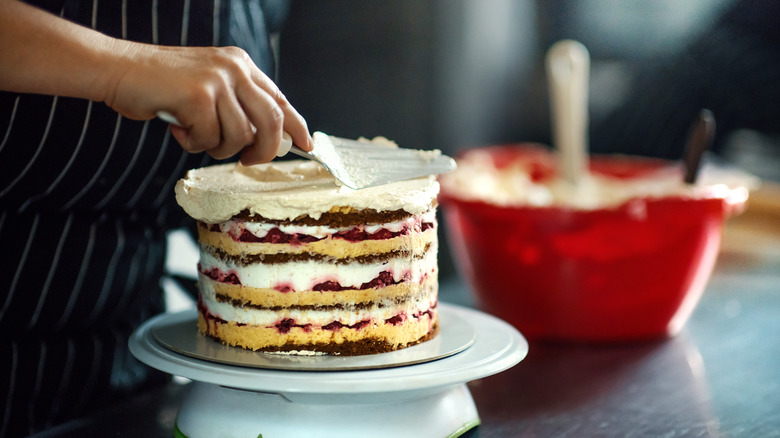The Frosting Tip That Will Prevent Torn Cake Every Time
For bakers, it is always cake season — but whether it is your favorite red velvet cake for a special celebration or a classic vanilla cake for a simple dessert, everyone makes mistakes when it comes to the frosting. That sugary sweet layer is the pièce de résistance of this baked good; however, if you find your cake is tearing or falling apart when you begin to spread it across your layers, stop. This is most likely happening because you did not bring your frosting to room temperature before you began this process.
This is true if you are working with your favorite store bought frosting or if you are making your own. When you are working with a buttercream frosting in particular that uses butter as a base, the fats need to be warm enough so you can easily spread it, but not so warm that they melt. It can be a delicate dance. The same rule holds true for a cream cheese frosting. Remember, if it feels like it is getting too warm, you can always put it in the fridge for a few minutes to let it firm up ever so slightly before you continue frosting your cake.
Be temperature-conscious
If you are using a ganache frosting for your cake, you want it to be at room temperature, but you do not want to apply it to your cake before it cools down to a semi-solid state. This paste-like texture is when your ganache is definitely not a runny, syrupy chocolate that just soaks into your layers but it also isn't so solid that it is impossible to spread. It should have a consistency of Nutella. If you find that your ganache is starting to firm up as you are frosting your cake and it begins to tear the sides or top, simply microwave the ganache for a few seconds.
Of course, if you are making your frosting ahead of time and it needs to be stored in the fridge, no problem. Just remember to pop it out of its cold environment about 30 minutes prior to when you are going to frost your masterpiece and let it warm up to room temperature. And be aware of the temperature in your kitchen. If it tends to run warm, you may not need as much time to allow your frosting to reach the optimal temperature.

